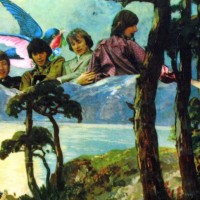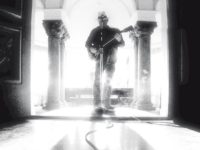Sugar Mountain: Live at Canterbury House was the third in a series of archived concert recordings that Neil Young had begun excavating from his massive vault, but actually preceded the prior two in chronology. More than even Live at The Fillmore East (1970) or Live at Massey Hall (1971), these 1968 recordings remind me of Stephen Stills’ superlative Just Roll Tape sessions.
In both recordings, each had just put Buffalo Springfield in their rearview mirrors and were contemplating their next career move, moves that would make them both superstars. In the meantime, each stuck with arrangements stripped down to solo guitar trying out new songs. Some of these songs would become very well known later on.
Neil Young’s Sugar Mountain: Live at Canterbury House, released on December 2, 2008, was a little different in one important aspect, though: He played these songs in front of a live audience. Since Young’s reputation at that time was entirely built upon his time in Buffalo Springfield, several songs are drawn from those days: “Birds,” “Nowadays Clancy Can’t Even Sing,” “Mr. Soul,” “Expecting to Fly,” and “Broken Arrow.” We also hear a good many tunes that were to appear on his self-titled solo debut just a couple of months after this performance, like “I Could Have Her Tonight,” “The Last Trip To Tulsa,” and “The Loner.”
There’s two main things you’re likely to take away from Sugar Mountain: Live at Canterbury House. One is that it’s fascinating to listen to Neil Young speak to the audience between songs — sometimes for several minutes — telling stories in a rather earthbound, small talk manner. It goes to reveal Young as a more personable, somewhat timid human person than his reputation allows. He already had some success with the band he just left, but didn’t seem sure yet that his solo career would take off.
Secondly, the songs themselves sound great even without the accompaniment of the studio versions and the perspective of fame that he was to enjoy a short time later. The one song previously released from this concert, “Sugar Mountain,” has always been played that way — and we wouldn’t have it any other way. Now we know that the inner beauty of Neil Young’s other early songs shine through unadorned right from the beginning of his fabled solo career.




